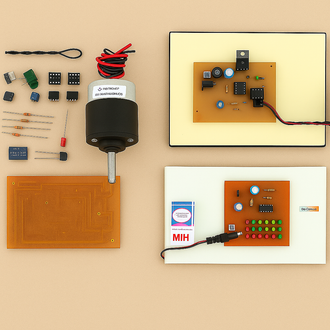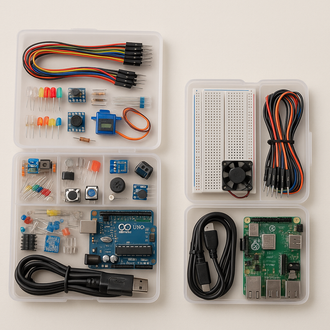
Electromagnet: What It Is, How Electromagnet Is Made, and Key Uses
- 06 Oct, 2025
An electromagnet is a device that produces a magnetic field when an electric current passes through a wire coil. Unlike permanent magnets, it can be turned on or off, and its strength can be varied by changing the current or the number of turns in the coil. This makes electromagnets one of the most useful inventions in modern engineering, powering motors, relays, solenoid valves, cranes, and countless electronic systems.
What Is an Electromagnet?
The term electromagnet refers to a type of temporary magnet that gains its magnetic properties only when current flows through it. The magnetic field is created due to the motion of electric charges—an application of Ampere’s Law, which relates current to magnetic field generation.
When the current stops, the magnetic field collapses, and the material loses magnetism. This controllability makes electromagnets superior to permanent magnets in industrial and automation systems.

Illustration: Coil winding around soft iron core – the basic setup of an electromagnet.
How Electromagnet Is Made
Understanding How electromagnet is made is key to appreciating its working principle. The basic components required are:
- Copper Wire: Acts as the conductor through which current passes.
- Soft Iron Core: Concentrates and strengthens the magnetic field.
- Power Source: Provides the current that generates the field.
The process involves tightly winding insulated copper wire around the iron core. When connected to a DC supply, the flow of current through the coil produces magnetic lines of force, turning the core into a magnet. Increasing the coil turns or current increases the field strength.
This simple setup forms the foundation for all devices based on electromagnetism—from doorbells and relays to high-torque electric motors.
Electromagnet Working Principle
The operation of an electromagnet is governed by the right-hand rule: when current flows through a conductor, it produces circular magnetic lines around it. Coiling the wire concentrates these lines, forming a strong central field inside the core.
The field direction depends on the current’s polarity—reversing the current reverses the poles. This principle allows precise control over mechanical motion in devices such as solenoid actuators and electromagnetic switches.

Working principle of an electromagnet showing current direction and resulting magnetic flux lines.
Electromagnet Examples in Real Life
There are numerous electromagnet examples in everyday life that demonstrate the versatility of this technology:
- Electric Motors: Convert electrical energy into mechanical rotation using electromagnetic induction.
- Relays and Contactors: Use electromagnets to open or close circuits automatically.
- Electromagnetic Cranes: Lift heavy ferromagnetic materials in scrapyards and factories.
- Speakers and Microphones: Convert sound into electrical signals and vice versa through electromagnetic motion.
- Magnetic Door Locks: Provide secure locking using controlled magnetism.
Electromagnet Uses and Applications
The range of electromagnet uses extends across industries and disciplines:
- Automotive Industry: Used in starter motors, wipers, and sensors.
- Medical Field: MRI machines rely on powerful superconducting electromagnets to generate high magnetic fields for imaging.
- Automation: Solenoids and relays control mechanical movements in factory systems.
- Research and Education: Demonstrations of electromagnetic induction and field strength calculations.
- Communication Devices: Loudspeakers, buzzers, and telecommunication circuits use magnetic induction for signal generation.
Advantages of Electromagnets
- Field strength can be controlled precisely by adjusting the current.
- Can be switched on and off instantly.
- Provide greater force than permanent magnets of similar size.
- Can be miniaturized for compact devices or scaled for heavy machinery.
Electromagnet vs Permanent Magnet
Unlike permanent magnets, electromagnets are temporary and depend on electricity. Permanent magnets retain magnetism indefinitely, while electromagnets are ideal where variable control is needed, such as in lifting devices and electric motors.
Applications in Modern Technology
Today’s industrial landscape heavily relies on electromagnetism—from power generation to robotics. The efficiency and reliability of electromagnetic systems make them central to automation, renewable energy, and smart device control.
Conclusion
Understanding How electromagnet is made reveals why this simple device underpins so much of our technological progress. From lifting tons of steel to operating tiny sensors, the electromagnet remains one of the most transformative applications of physics in engineering. Explore more electromagnetic kits and components at KitsGuru to start building and experimenting with your own projects today.
















